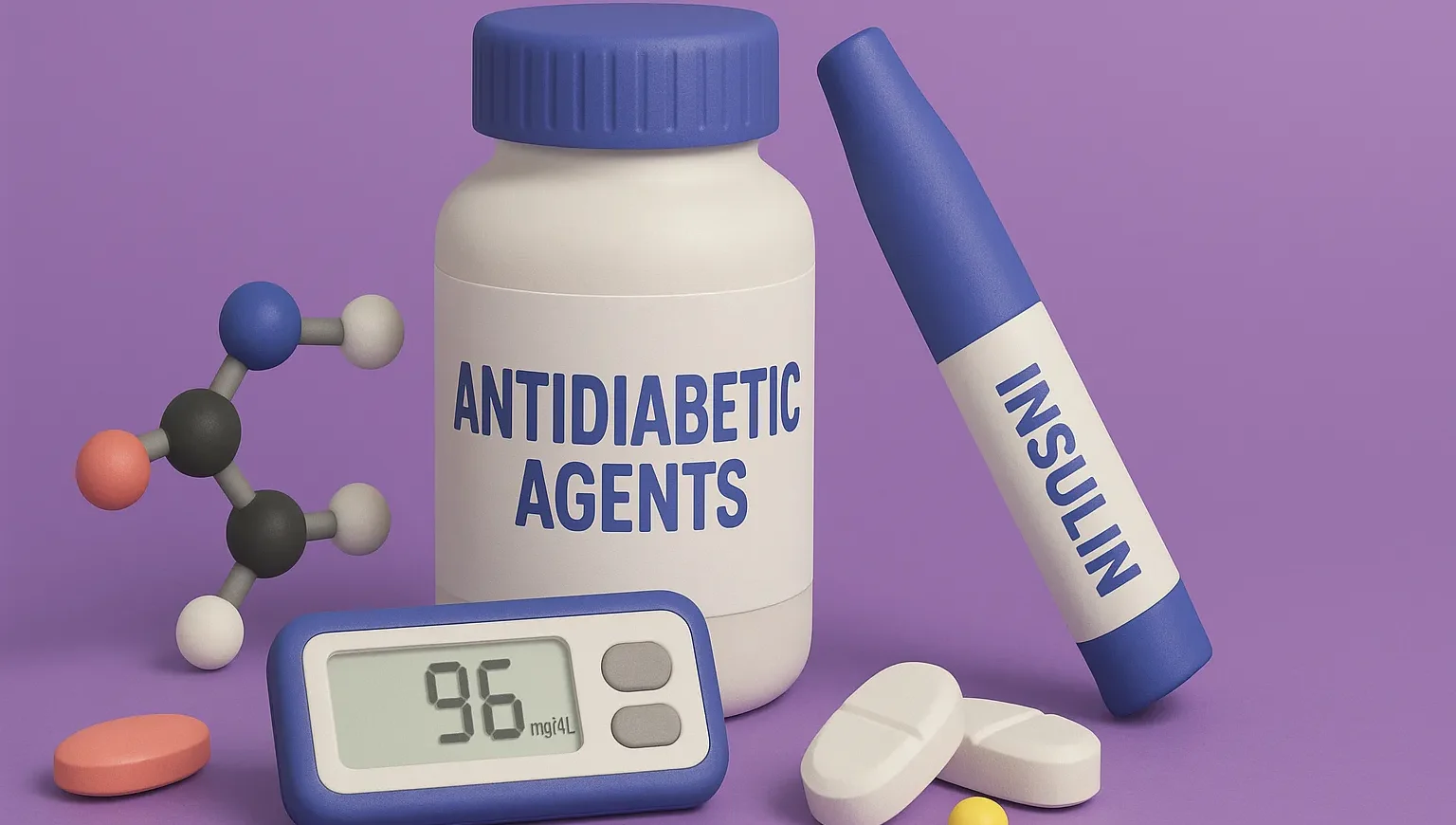- Antidiabetic agents are medications used to manage blood glucose levels in individuals with diabetes mellitus.
- These agents work through various mechanisms to enhance insulin action, increase insulin secretion, reduce hepatic glucose production, or decrease glucose absorption from the gastrointestinal tract.
- Proper classification of antidiabetic agents is essential for selecting appropriate therapy based on the patient’s specific needs, type of diabetes, and potential side effects.
Classification of antidiabetic agents

-
Sulfonylureas
- Mechanism: Stimulate insulin secretion from pancreatic β-cells by closing ATP-sensitive potassium channels, leading to cell depolarization and calcium influx.
-
Biguanides
- Mechanism: Decrease hepatic glucose production (gluconeogenesis) and increase insulin sensitivity, particularly in muscle tissues.
-
Thiazolidinediones (TZDs)
- Mechanism: Activate peroxisome proliferator-activated receptor-gamma (PPAR-γ), enhancing insulin sensitivity in adipose tissue, muscle, and the liver.
-
α-Glucosidase Inhibitors
- Mechanism: Delay the absorption of carbohydrates from the small intestine by inhibiting α-glucosidase enzymes, thereby reducing postprandial blood glucose spikes.
Summary of Proper Classification
| Class | Agents |
| Sulfonylureas | Tolbutamide, Chlorpropamide, Glipizide, Glimepiride |
| Biguanides | Metformin |
| Thiazolidinediones (TZDs) | Pioglitazone, Rosiglitazone |
| Meglitinides | Repaglinide, Nateglinide |
| α-Glucosidase Inhibitors | Acarbose, Voglibose |
Thank you for reading from Firsthope's notes, don't forget to check YouTube videos!

